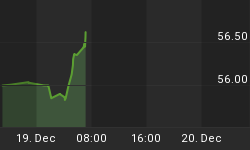This is a postscript to Fed Chairman Bernanke's testimony yesterday to the Senate Committee on Banking. Bernanke stated that the FOMC's "central-tendency" forecast for 2006 real GDP Q4/Q4 was in a range of 3-1/4% to 3-1/2%. Splitting the difference, this works out to be 3.4% rounded. Given real GDP growth of 5.6% in the first quarter, the midpoint of the FOMC's central tendency forecast implies growth of a bout 2-3/4% annualized over the remaining three quarters of 2006. The CBO estimates that potential real GDP growth over the remaining three quarters of 2006 is about 3.2%. So, implicit in the FOMC's 2006 real GDP forecast is below potential growth over the remainder of 2006. Perhaps this is why the FOMC expects inflationary pressures to moderate going forward. What is somewhat mysterious is why the FOMC expects real GDP growth in 2007 to accelerate to 3.1% (midpoint of 2007 central-tendency forecast) from 2-3/4% in the final three quarters of 2006. Perhaps the FOMC expects to start cutting the fed funds rate either late in 2006 or early in 2007 as we expect it to.
Given the recent behavior of the Conference Board's index of Leading Economic Indicators (LEI), the FOMC's below-potential economic growth forecast is entirely reasonable. Although the LEI increased 0.1% in June after having fallen 0.6% in May, the 6-month annualized change in the LEI is minus 0.6% -- the second consecutive month in which the 6-month change has been negative. The chart below shows that 6-month contractions in the LEI generally lead to contractions, or, at least, significant decelerations in the index of Coincident Indicators. Although every recession starting with the one in 1960 has been preceded by a 6-month contraction in the LEI, some contractions have not been followed by an "official" recession. However, as just noted, even if a recession does not occur, a sharp deceleration in the pace of economic activity does occur with a 6-month contraction in the LEI. The economic growth slowdowns of 1967 and 1995 are examples of this. Had it not been for Fed interest rate cuts in 1967 and 1995, official recessions might have occurred. Investors ignore the behavior of the LEI at their own risk.
Conference Board's Coincident vs. Leading Economic Indicators
(6-month annualized percent change)
shaded areas represent periods of recession
















